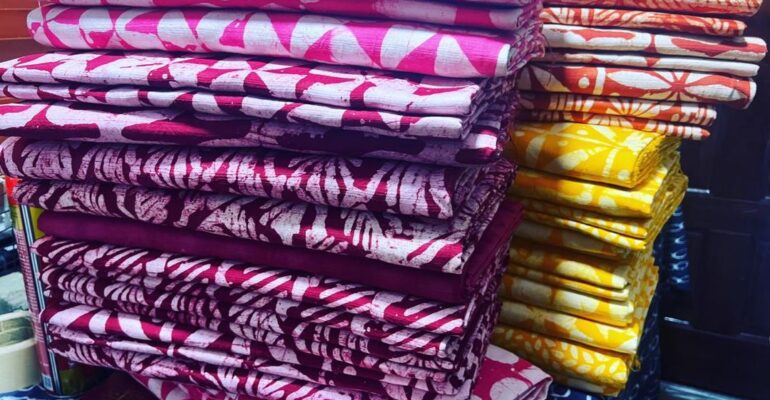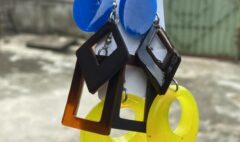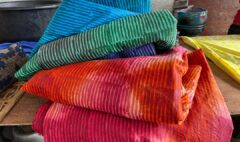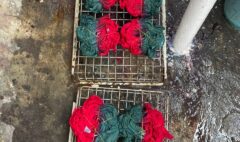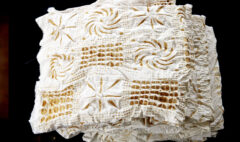From Indigo to Income: Build a Profitable Adire + Batik Textile Brand in 30 Days
From Indigo to Income: Build a Profitable Adire + Batik Textile Brand in 30 Days
From Indigo to Income: Build a Profitable Adire + Batik Textile Brand in 30 Days
Opening Notes
There is a particular magic when dye opens its lungs to the air. Indigo comes up from the vat looking like swamp water, then it hits oxygen and shifts, ocean to midnight, in seconds. In that quiet alchemy, African history breathes. Yoruba women in Abeokuta wrote politics into fabric with cassava paste and raffia ties. Across the ocean and the trade winds, Javanese batik became a world language of wax and fire. Today, this cross-continental grammar of resist, dip, and reveal has a fresh audience and an even fresher business case. This guide sets the table for both. It blends cultural respect and market realism, a studio setup you can actually afford, plus a 30-day launch plan that gets your first drop out the door.
You can do this. You only need a clean space, a consistent process, a story with roots, and the courage to get indigo under your fingernails.
Why Adire + Batik Now: Cultural Roots, Modern Demand, and the Cashflow Opportunity
The cultural heartbeat
Adire is Yoruba resist dye, historically built on starch pastes, raffia ties, and indigo vats maintained by women who understood chemistry before the textbooks arrived. Adire eleko used cassava starch applied with feathers or combs, then dyed in indigo. Adire oniko tied beads, stones, or seeds into cloth to form constellations of white in a field of blue. The work was not just fashion. It was economy, solidarity, and politics. Market women funded their families and pushed back on exploitative taxes, most famously in Abeokuta in the late 1940s, when textile traders helped fuel a movement that forced colonial authorities to renegotiate power.
The global market is ready
Modern consumers want story-rich, slow-made textiles. Small-batch archives are selling out on Instagram. Interior designers hunt for limited drops. Shoppers care about ethical production. Adire and batik meet all these criteria, if you produce with clarity, respect, and consistency. Cashflow potential is strong because the category blends high perceived value with manageable input costs. Bandanas and scarves move volume. Totes and cushion covers widen your audience. Limited-edition art panels feed collectors who prefer rarity over mass.
A clear niche, not saturated
Unlike screen-printed tees or generic homewares, resist-dyed textiles are tactile and unique. Slight variations feel artisanal, not flawed. This gives you a defensible brand lane. You can become the person who tells the story of Yoruba motifs in a voice that honors their origin, and you can deliver products with production quality that keeps customers coming back.
Materials and Tools Checklist
[Indigo] Fabric and resist
- 100 percent cotton fabric, poplin or quilting cotton for bandanas, medium-weight canvas for totes, cotton sateen or voile for scarves
- Beeswax and paraffin, blend to alter crackle and penetration
- Tjanting pen for linework, copper tip preferred
- Stamps or carved blocks, wood or linoleum, or calabash-carved motifs
- Resist ties, raffia, string, beads, pebbles
- Optional traditional starch paste for eleko, cassava flour, alum, water
Dyes and safety
- Indigo vat materials, pre-reduced indigo or natural indigo, reducing agent such as sodium hydrosulfite or thiourea dioxide, alkaline such as soda ash
- Fiber-reactive dyes for bright colors beyond blue, such as Procion MX
- Soda ash, salt, urea as needed for fiber-reactive processes
- PPE, gloves, goggles, respirator or N95 for powders, apron
- Thermometer, pH strips
- Heat source for wax, electric skillet, wax pot with thermostat
- Ventilation solution, fan near window, fume hood if possible
Studio hardware
- Buckets or vats with lids, 10 to 20 liters
- Drying line with clips
- Stainless steel or plastic tools, do not use aluminum for alkaline vats
- Old towels, drop cloths, mesh strainers
- Iron and press cloth, or heat press
- Scale, notebook, waterproof labels
Design Foundations: Yoruba-Inspired Motifs, Repeat Patterns, and a 10-Piece Launch
Listen to the cloth
The Yoruba catalogue is deep. Motifs like olokun waves, cowrie shells, lizard tracks, and cassava leaves carry meanings. They are not clip art. They are language. If a motif is sacred or specific to a lineage, consider adaptation rather than direct lift, or collaborate with a culture bearer. Respect is part of quality control.

[Teal] Build a repeat library
- Start with three core motifs, one geometric, one organic, one narrative
- Design repeats at 6, 8, or 12 inches, so they tile across scarves and yardage
- Test negative space, the breath of the pattern matters as much as the mark
Sketch a 10-piece capsule
- 3 bandanas with distinct pattern density, light, medium, bold
- 2 scarves, one indigo classic, one multi-layer batik with color
- 2 tote bag panels with motifs placed for the front pocket
- 2 cushion covers, 18 by 18 inches, one tie-resist, one stitch-resist
- 1 premium art panel, 24 by 36 inches, signed and numbered
Aim for a palette that balances indigo with two accent hues if you use fiber-reactive dyes, think rust, marigold, kola nut brown.
Studio Setup on a Budget
Air, heat, and flow
- Ventilation, a window fan pulling air out, cross-ventilation, and an extraction hood if possible
- Heat for wax, use an electric skillet with thermostat, keep wax between 70 and 90 degrees Celsius, steady and never smoking
- Dye area, plastic sheeting, buckets on a low bench, floor protection
- Drying line, cord and clothespins, away from dust
- Safety zone, a shelf for chemicals, clearly labeled, away from children and food
Set up the studio to flow left to right, clean to dirty to clean again, prep, wax, dye, rinse, dry, press, pack.
Step 1: Prep the Fabric
Scour, pre-wash, and cut
- Scour removes sizing so dye penetrates. Simmer fabric with a tablespoon of soda ash and a teaspoon of detergent per liter for 30 minutes. Rinse thoroughly.
- Pre-wash on hot, then dry. Iron smooth. This prevents post-dye shrink surprises.
- Cut to product dimensions, bandanas 22 by 22 inches, scarves 20 by 70 inches, tote panels 16 by 18 inches, plus seam allowances if needed
Stack in sets of ten and label with waterproof tags. Consistency begins with cuts that match.
Step 2: Mix Dyes and Indigo
Indigo vat basics
- Use pre-reduced indigo for simplicity. Heat water to roughly 40 degrees Celsius. Dissolve indigo, add soda ash to raise pH to 10.5 to 11.5. Add reducing agent as directed. Stir gently, then stop, and let the vat settle for 20 minutes.
- Skim the “flower” from the surface before dipping. Keep oxygen to a minimum. Lid on between dips.
Fiber-reactive color mixing
- Primary dyes yield dozens of hues. Mix by grams per liter of water. Add salt to help dye migrate, then add soda ash to fix. Test one swatch per color and record recipe, grams of dye, volume of water, pH, temperature, time.
[Crimson] Swatch log template
- Fabric type
- Pre-treatment
- Dye brand, color, grams
- Soda ash concentration
- Temperature and time
- Notes on brightness and wash fastness
Photograph swatches in daylight and keep in a binder. This becomes your intellectual property.
Step 3: Wax-Resist and Tie Techniques
Getting lines that sing
- Tjanting linework, keep wax fluid and the tool warm. Practice on scrap. Draw with your whole arm, not just your wrist. Recharge the reservoir often to avoid broken lines.
- Stamping, pre-warm blocks. Dip stamp face into wax, tap off excess, then press firmly. Aim for a crisp edge.
[Teal] Adire oniko and alabere
- Oniko, tie resist using raffia or strong thread over beads, seeds, or pebbles to create rings and constellations. The tighter the tie, the sharper the white.
- Alabere, stitch resist. Sew rows of running stitches, then pull tight to gather. Knot securely. Try chevrons, circles, or wave lines.
Layering batik
- Think light to dark. Apply first wax layer, dip in a light color, dry. Wax the areas you want to protect. Dip in a deeper color, dry. Repeat. Keep the wax clean. Skim debris that could muddy lines.
[Crimson] Traditional note
If you work with cassava paste resist for eleko, test viscosity. It should draw without running. Apply with feathers, calabash combs, or a squeeze bottle. Dry fully before dyeing.
Step 4: Dyeing and Layering Color
Submersion and oxidation
- For indigo, gently lower the fabric, squeeze to remove bubbles, leave for 1 to 3 minutes. Pull out, let it turn blue for 2 to 5 minutes. Repeat dips for deeper shades. Four to eight dips create rich navy.
- Do not wring. Support the weight of the cloth. Respect the vat.
[Teal] Multi-dip gradients
- For ombre, dip only part of the fabric, gradually lower deeper with each dip, overlapping slightly. Rotate or angle for diagonal gradients.
Fiber-reactive sequence
- Immerse in dye bath with salt. Stir gently. After 15 minutes, add soda ash. Batch for 60 to 90 minutes warm, or wrap and set 8 to 24 hours cool. Rinse cold to remove unfixed dye, then wash hot with detergent.
Step 5: Reveal and Finish
Remove and reveal
- Cut ties to unveil starbursts and constellations. Photograph the first reveal for content and documentation.
- De-wax by simmering fabric in water with a scoop of detergent and a pinch of soda ash for 10 to 20 minutes. Wax floats. Skim and solidify in a container. Reuse clean wax. Alternatively, place fabric between absorbent paper and iron to lift wax, then launder.
Neutralize and press
- Rinse until water runs clear. For indigo, a final rinse with a splash of vinegar helps. Line-dry in shade to preserve color. Press hot with steam for a professional finish.
Quality control checklist
- Check edges, no loose threads
- Inspect pattern clarity, no unwanted smudges
- Colorfastness test, rub with a white cloth
- Measure final dimensions
Batch Production and Consistency
[Indigo] Systems scale small brands
- Templates, use cardboard or acrylic guides for cutting and motif placement
- Timing charts, create a wall chart of times for wax, dips, oxidation, batchi

ng, washing
- Batch sizes, work in tens for bandanas and fives for scarves, this balances momentum and attention to detail
Record every run, including the weather. Humidity and temperature can alter results.
Product Suite That Sells
Fast movers and heroes
- Bandanas, entry price and highly giftable
- Scarves, higher margin, statement wearable
- Tote bags, practical and visible advertising
- Cushion covers, steady home decor category
- Limited editions, signed art panels for collectors
Bundle options, bandana plus tote sets, or cushion pairs. Create color stories with names that travel, Lagos Lagoon, Harmattan Sky, Nsukka Clay.
Pricing with Profit
Know your numbers
Define COGS, materials, packaging, dye, wax, utilities, plus labor. Do not skip labor. Your time is a cost.
Example, indigo bandana
- Fabric and thread, 3.20
- Wax and dye chemistry, 1.00
- Utilities and packaging, 0.70
- Total materials, 4.90
- Labor, 30 minutes at 18 per hour, 9.00
- True COGS including labor, 13.90
Pricing formulas
- Wholesale price, 2 times true COGS. 27.80
- Retail price, 2 times wholesale, 55.60. Round to 56
Alternate method
- Target gross margin, 65 percent at retail. Retail equals true COGS divided by 0.35
Offer tiered pricing, bandanas 32 to 56 depending on technique and edition. Scarves 85 to 160. Art panels 220 to 600. Ensure wholesale leaves profit after paying yourself.
Branding and Story
Name, origin, respect
Choose a name that honors the craft without claiming cultural ownership you do not hold. Acknowledge sources, Yoruba adire, Indonesian batik, local mentors, markets, and archives. Credit collaborators by name.
The story you tell
Write a brand narrative that links your work to a place and a process. Use care cards with cleaning instructions and a short note on indigo oxidation or the history of oniko and alabere. Position as eco-minded, small batch, and culturally respectful.
[Gold] Eco signals that matter
Natural fibers only, reuse and filter water when possible, reclaim wax, upcycle offcuts into scrunchies, bookmarks, patch sets, and mini art flags.
Photography That Converts
Simple, bright, and close
- Natural light, near a window with a reflector
- Flat-lays for pattern overview
- Macro shots of wax lines and stitch gathers
- Lifestyle images showing scale on a person or sofa
- Include a color card for accuracy in one shot
Tell the oxidation story in a sequence of five photos, vat to reveal.
Sales Channels
Your first shelves
- Etsy, low barrier, search-driven. Use keywords, adire bandana, indigo scarf, batik tote, wax resist cushion
- Shopify, your home base as you grow
- Instagram and TikTok, shoppable posts and Reels
- Local markets and pop-ups, bring a vat video loop on a tablet
- Wholesale to boutiques, send a clean line sheet and 3 sample swatches
Launch in 30 Days
Week-by-week plan
- Week 1, research, sketch, and sample. Build mood board, mix two dye recipes, one indigo vat. Make five test swatches. Decide on your 10-piece capsule.
- Week 2, produce first batch. Cut, wax, dye, and finish bandanas and one scarf. Set up brand assets, name, logo, care cards, and basic packaging.
- Week 3, complete the collection. Photograph everything. Build Etsy or Shopify listings. Write product descriptions with material, size, care, technique.
- Week 4, launch. Email friends and early supporters, offer early-bird bundles. Post daily content, three posts, one behind-the-scenes, one product focus, one story on history. Pitch one boutique with a sample pack. Collect emails with a simple sign-up form and a 10 percent launch code.
Content Engine
10 viral video ideas
- Wax pour soundscape, ASMR close-ups
- Indigo dip time-lapse, green to blue to midnight
- Tie-resist tutorial in 30 seconds
- Stamping montage with motif meanings on screen
- Before and after, waxed cloth to finished scarf
- Studio soundtrack, morning light and steaming vat
- Troubleshooting cracked wax with tips overlay
- Care card demo, how to wash indigo
- Customer unboxing, duet or stitch their video
- Origin minute, a story about Abeokuta market women
Prompt customers with UGC questions, What did your scarf see today, post a photo with hashtag. Feature your community weekly.
Multiple Income Streams
Expand without losing soul
- Digital pattern licenses for motifs, personal-use or commercial tiers
- Fabric by the yard for quilters and designers
- Workshops, in-person or Zoom, beginner batik, indigo 101, stitch resist intensives
- Kits, pre-cut cotton squares, small tjanting, wax pellets, dye packets, safety sheet
- Collaborations, capsule drops with a local designer, hotel boutiques, gallery pop-ups
Quality, Safety, and Sustainability
Protect yourself and the planet
- PPE always when handling powders, gloves, goggles, respirator
- Ventilation for wax heating and dye mixing
- Label and store chemicals safely. Never reuse food containers for chemicals.
- Wax disposal, skim and solidify, reuse clean wax, never pour down drains
- Use natural fibers, cotton, linen, or hemp. Avoid blends that reject dye.
- Water care, filter rinse water to catch wax flecks and threads. Neutralize alkaline solutions before disposal according to local regulations.
- Upcycle scraps into small goods. Zero-waste pack slips, recycled paper tags.
Scale Smart
Build repeatable drops
- Hire helpers for cutting, tying, and packing. Train slowly and write SOPs, step-by-step with photos.
- Batch dye days on a predictable schedule, for example, indigo Tuesdays, color Thursdays.
- Seasonal collections tied to cultural calendars, new rains, harmattan, market day.
- Pre-order windows to validate demand before scaling production.
Quick Troubleshooting
Common issues and quick fixes
- Cracked wax when you want solid lines, reduce paraffin ratio, increase beeswax, lower wax

temperature slightly
- Wax too soft and lines bleed, increase paraffin in the blend, raise wax temperature slightly
- Dye bleeding or muddy colors, scour properly, rinse cold first, do not overcrowd dye bath
- Uneven indigo oxidation, increase rest time between dips, ensure full exposure to air, avoid stacking pieces on the line
- Dull fiber-reactive colors, increase dye concentration, verify pH, add fresh soda ash, raise temperature modestly
- Speckles or resist fails, filter wax and dyes, keep tools clean, do not drip water into wax
The Story Thread: Kemi and the Market That Remembered
Kemi learned indigo the way people learn songs, by humming along until they no longer think about the notes. Her grandmother, Iya Bisola, kept a vat behind the compound in Abeokuta. For years, that vat fed the family. It dressed children for school, bought medicine, paid association dues that made sure someone would show up with pots and firewood when there was a burial or a naming ceremony. In the late 1940s, the older women told her, cloth funded courage. Traders shut their stalls and gathered under the sun to protest taxes that punished women twice, as mothers and as workers. They did not call it a hashtag, but the message was loud. Price controls cannot silence commerce when the people control the supply.
Kemi moved to Lagos, then to Accra for a year, then home again. She started small, ten bandanas on a washing line. She posted a video of indigo turning from swamp to sky. Seventy people wrote back. Some were Yoruba, proud and touched, some were designers in Lisbon and Seoul, pulled by color and craft. She did not try to outrun the past. She printed her grandmother’s name on the care card. She mixed batches like a pharmacist. She priced like a business owner. When the first boutique order landed, twenty scarves, she did not sleep. In the morning she wrote the last tag, steamed the last hem, took a picture of her grandmother’s hands holding the box. The caption was simple. We are still here.
This is not a fairy tale. It is workflow and memory stitched tight, wax lines catching a nation’s breath.
How This Playbook Differs from Other Maker Guides
There are many smart playbooks for shea butter cooperatives, coffee micro-roasters, or beadwork collectives. Those models focus on supply chains and branding through agricultural or mining value addition. This guide is different in three ways. First, the core value lies in design and process knowledge rather than commodity sourcing. Second, the studio is the factory. Your quality control sits five steps from your drying line, not six months in a container ship. Third, the cultural lineage directly shapes your product language. Motifs are not decorative extras. They are identity markers. That calls for a slower, more respectful marketing cadence and a transparent origin story integrated into every SKU, from bandana to gallery panel.
[Gold] Final Push: Your First Drop Is Closer Than You Think
If you follow the 30-day calendar, by this time next month you will have product in hand, photos in your camera roll, and a store link ready to share. This is a craft anchored in African ingenuity that grew global long before the internet. Your job is to keep the line unbroken, then to sell with the calm confidence of someone who knows their margins, their story, and their process.
What motif will you choose for your first piece, and whose hands will you honor in your care card?
Sources and Further Reading
- Byfield, Judith A. The Women’s War of 1946 to 1948. The Abeokuta Women’s Tax Protest in Colonial Nigeria. Journal of African History and Oxford references.
- Victoria and Albert Museum. Batik collections and technique overviews. vam.ac.uk
- Smithsonian, National Museum of African Art. Adire and indigo dye resources and image archives.
- Maiwa Textiles. Indigo and resist dye technical notes and safety sheets. maiwa.com
- Dharma Trading Co. Indigo vat setup and Procion MX dye guides. dharmatrading.com
- Picton, John, and Gillow, John. African Textiles. Thames and Hudson. Sections on Yoruba adire and West African resist-dye traditions.
- United Nations Industrial Development Organization. Small-scale natural dyeing and environmental guidelines.
- Safety Data Sheets for sodium hydrosulfite and soda ash, consult supplier SDS and local regulations.
Continue for downloadable checklists, a sample SOP pack, and a printable 30-day calendar.

